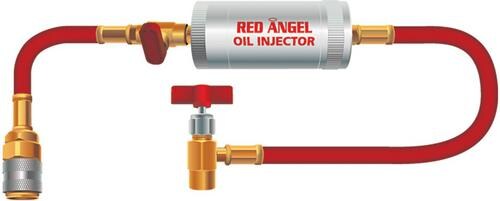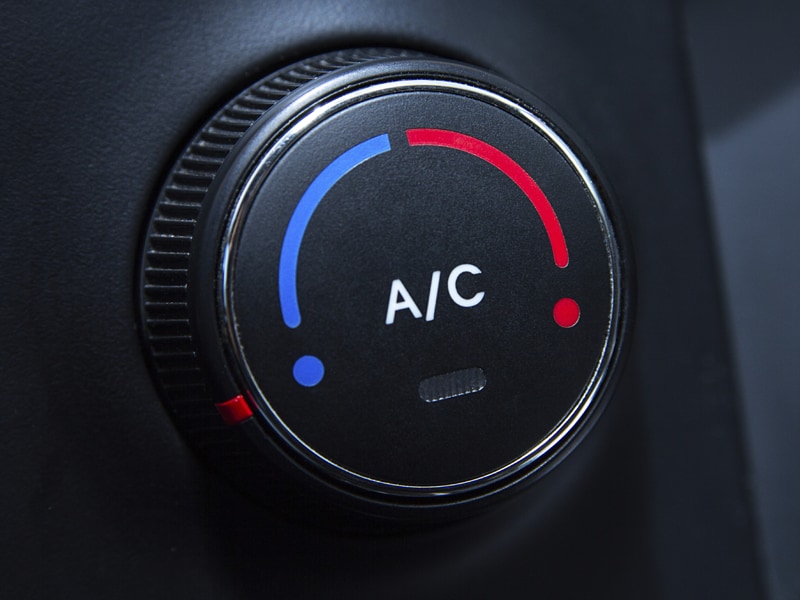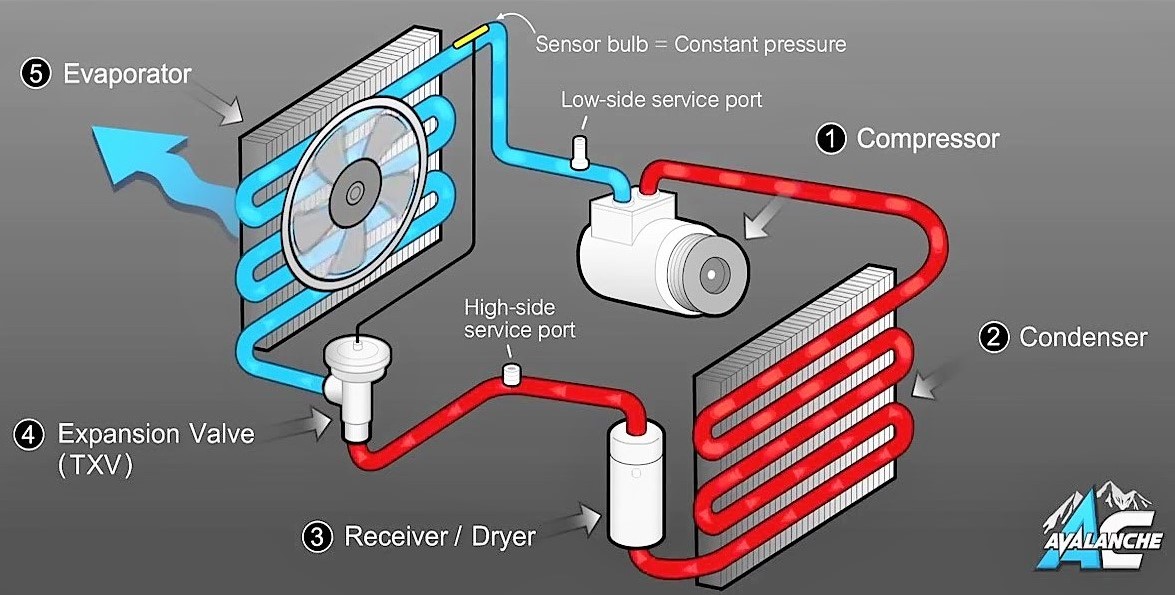
I'll have a vacuum pump tomorrow and will evacuate & recharge the system with the correct amount (hood label says 1.5 lbs) regardless. I decided to pull some refrigerant to see if anything improved, wanted to test the overfill theory. I knew within 15 minutes of driving it that something was not right, no idea how they missed it if they had it running for 30 minutes. They've been good on other repairs, but I don't think I'll use them for AC going forward. This particular mechanic is in an area of town where his customers probably favor cost over getting things done right. Wouldn't putting it under a vacuum / properly evacuate the system negate the need for a leak check while running? All he said was that he ran it for 30-45 minutes to check for leaks after filling. I have no idea what the mechanic did when he replaced the condenser, sounds as though he either overfilled it or did not put it under a vacuum before filling it. Does this sound like the right thing to do at this point? What do I do about oil, is it necessary to add any extra? I'll take it to have the refrigerant captured, then I'll vacuum /evac the system for 30 mins and fill by weight. The receiver / drier is integral to the condenser on this vehicle, so that's not a question mark since the condenser has been replaced.

(It May be as simple as hook up gauges, turn on a/c, read red guage's psi but it may be more involved too, best to wait for others to chime in). You wont have that luxury it sounds like, so you'll need the gauges.Īs for the proper procedure to use when obtaining that high side pressure on the gauges, I do not have it, sorry. The high side pressure rating was the final data point that verified my suspicions, but I obtained it via the relevant PID in the WOT datalogs I was generating with my DS tuner. The system turned out to be overfilled with Freon, and removing the excess amount fixed the behavior it was exhibiting previously in the adverse conditions. At those times, it would just blow outside air inside the car, so no cooling at all really. It was fine until temps outside got above 80 and vehicle forward movement was little or none, like in stop and go traffic. I had this situation on my last Challenger. That can manifest itself in different ways, but one way a slightly overfilled system (as opposed to grossly overfilled) will behave is to blow cold air most of the time, but then only blow cool or even warm air when you really need it most. Going just off your post's info, and in the absence of more info from the folks that touched it, I would say the system has too much refrigerant in it. If it's an indication of something wrong, I've got the same problem to deal with on mine. That constant cycling of the compressor is common behavior, if not normal as well, for the Mopars I've owned recently. Any help or insight would be appreciated! But I do know that the compressor should not cycle on and off like this.Īnyone have any idea what might cause this? Would like to at least have a sense of what might be wrong before I bring it back to the mechanic and drain my wallet further. Don't know enough about AC to discern whether the gauge going up and down with the compressor cycling is appropriate behavior.

When the compressor kicks back on, it goes back to 40 PSI. When the compressor kicks off, the gauge goes higher to about 55 PSI which is in the yellow/warning area of the gauge. The "filled/green" part of the gauge spans 25-45 PSI, and I'm getting approx 40 PSI when the compressor is running. I have a DIY gauge for the low pressure side, so I plugged that in to see if perhaps it was low on refrigerant, and the gauge reads right where it should. About 5-10 seconds on, 5-10 seconds off, does this constantly. I checked the compressor with the vehicle running and it is cycling on and off repeatedly. In 80+ degree temps it fails miserably at keeping the interior a comfortable temperature.

Yesterday was the first good hot day I could really put it to the test, and it's blowing out what I would consider "cool" air (definitely cooler than ambient temp), but far from cold. I assume they topped up the refrigerant, he told me they added dye, ran it for 45 minutes or so to test for any other leaks, everything looked good so they sent me on my way. I took it to a trusted independent mechanic a couple weeks ago to have them determine what is wrong, and they replaced the condenser which had a substantial leak. The compressor did kick on right away and it blew cold air for a week or two. He added some refrigerant & dye so I could see if the compressor would kick on and that the system itself was working, hopefully indicating that it's a leak and not anything major. I bought the car last year and pointed out to the dealer that the AC wasn't working. I have a 2007 Chrysler Pacifica that I'm having AC issues with.


 0 kommentar(er)
0 kommentar(er)
